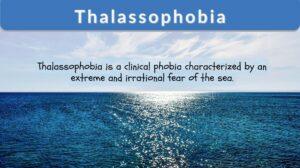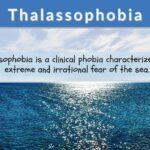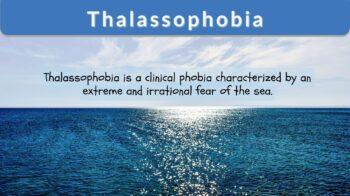
Thalassophobia
n.,
[ˌθæləˈsɒˈfəʊbi.ə/]
Definition: an intense fear of an open water, such as the sea or an ocean
Table of Contents
Among many psychological and psychiatric disorders, one is the fear of the ocean and the fear of deep water, which in scientific terminology, is classified as thalassophobia.
Thalassophobia is the specific phobia or intense fear of deep bodies, deep water, and sudden fear of large bodies. The tendency to get intimidated and to have feelings of actual danger from deep or open water with the appearance of common physical symptoms like chest pain, sweating, increased heartbeat, etc are common.
There are innumerable emotional symptoms too like anxiety disorder, panic attack, development of a fear response, and significant distress on encountering any other deep bodies too. Many peer-reviewed studies have shown that support and treatment facilities can help one overcome this irrational fear.
With the populations suffering from different diagnosed anxiety disorders, seeking professional medical advice should become more acceptable in society.
By the end of this article, you’ll be in a position to answer some of the trivial questions like how do I know if I have thalassophobia, is thalassophobia real, or how to overcome the fear of deep-sea? First, let us understand the thalassophobia definition.
What is Thalassophobia?
Thalassophobia is a type of medically diagnosed and recognized phobia related to fear of open water, fear of deep dark water, fear of underwater, and specifically fear of the deep ocean (ocean phobia). This term has been derived from two Greek words; the first one being “θάλασσα” coded as “thalassa” meaning ‘sea’ and the second one being “φόβος” coded as “phobos” meaning ‘fear’.
A general sense of danger with a persistent and intense fear associated with water has always been noted in the human creed since the beginning of time.
Sudden exposure to deep bodies of water whether they be seas, oceans, natural or artificial swimming pools, rivers or lakes always comes as a challenging situation for all of us. Only a gradual exposure has been noted to be comfortable for most of us. But then particular subsets of people are afraid and intimidated even by this gradual exposure to large bodies of water.
This particular fear is termed thalassophobia. When even the slightest encounter with seas can trigger thalassophobia in some individuals, imagine how they might feel and what they might undergo when coming face to face with the huge dimensions of seas and oceans for a longer span of time. This must be scary and hence psychologists lend help in overcoming thalassophobia in these individuals.
Aquaphobia vs thalassophobia
People often confuse thalassophobia with aquaphobia. Aquaphobia is, in general, the fear of water. An aquaphobic person can’t stand the encounter with water. Contrastingly, thalassophobic people are not scared at every sight of water; rather they are scared of deep and huge dimensions of water in the form of seas and oceans.
Losing the sight of any landmass and being in the middle of the ocean triggers thalassophobia. It is not that the mere sight of running water in your washbasin can make you thalassophobic.
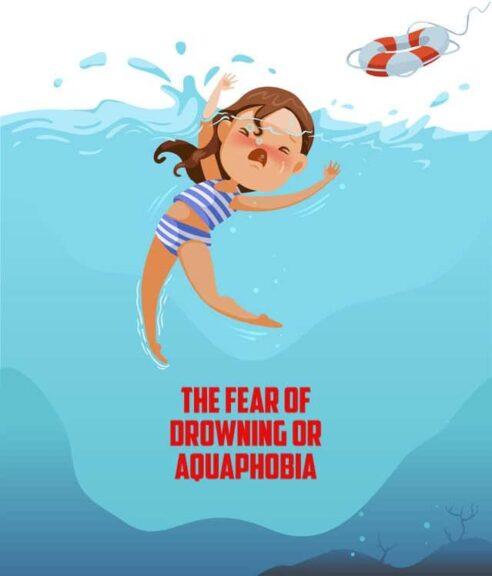
The meaning of thalassophobia
People diagnosed with thalassophobia don’t just have the fear of deep water but sometimes are also afraid of the huge distances from the landmass. It could be reasoned out to the real and vast emptiness of the sea when one steps onto a water journey. Some thalassophobic individuals also fear being caught up by the sea waves and being swallowed up by the ocean. Another set of thalassophobic individuals has reported an intense fear of aquatic animals and creatures too.
Now that you can easily differentiate between aquaphobia and thalassophobia, we expect that you can define thalassophobia properly.
What triggers thalassophobia?
A casual conversation about oceans and cruises must be normal for most of us. But the same conversation can trigger thalassophobia in a thalassophobic (sensitive) person. Various different things and combinations of things can serve as triggers for thalassophobia. Let’s try to list out some of the known ones:
- Thought of seas or oceans
- A visit to seas or oceans
- Passing by or driving past seas or oceans (via road, water, or air transport)
- Watching or catching glimpses of seas or oceans in documentaries or movies or pictures
- Hearing stories of and imagining seas or oceans
Depending upon the level of fear, the threat level that one experiences can vary from individual to individual. It has been scientifically worked out that people who are fearful and scared of seas and oceans (thalassophobic) experience greater threat even on seeing an image or picture of the sea than those who are not thalassophobic. (Ref. 1,2,3)
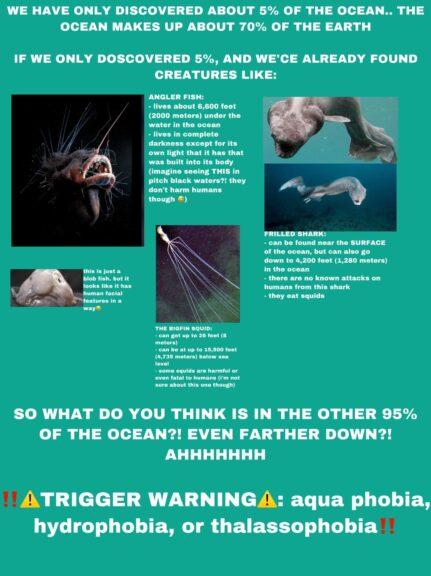
A thalassophobia is a clinical phobia characterized by an extreme and irrational fear of the sea, open water, fear of deep dark water, fear of underwater, and fear of the deep ocean.
Etymology: Greek thalassa (sea) + phobos (fear).
How Common is Thalassophobia?
Thalassophobia is one of the common phobias in mankind. This is often unidentified as a lot more than the expected number has it. Tens of thousands of people have been diagnosed with thalassophobia across the globe.
Symptoms and Signs of Thalassophobia
Since thalassophobia or any phobia for that matter can negatively affect your quality of life, it’s advisable to seek help from a mental health professional. As most phobias are at their peak when one is young, it can be of real help if one is aided and helped to overcome them early on in their lives.
If you or any of your close and dear ones (particularly parental figures) display these medically listed mental or physical symptoms of thalassophobia, you should help them and be empathetic. As more and more mental health resources are becoming available at a mouse’s click, dealing with these phobias should become easier and free from the stigmas of the old world.
Thalassophobia is a characteristic anxiety disorder. Hence, the expected and noted signs are anxiety-related:
- Intense fear of deep waters combined with restlessness
- Sweating, heavy breathing/shortness of breath, and nausea
- Intense feelings, feeling overwhelmed, and worrisome behavior
- Lack of concentration (when discussion of the sea or related topic begins)
- Lowered patience level and high irritability
- Muscle tension build-up and difficulty in progressive muscle relaxation
- Shivering and shaking at the thought of seas and oceans
- Arrhythmia, heart palpitations, or tachycardia associated with encounters with seas or oceans
- The feeling of discomfort or uneasiness
- A feeling of persistent fear of impending doom or trouble sleeping
Watch this vid about thalassophobia:
Causes
Although scientists around the globe have worked a lot to decipher the real reason/s of thalassophobia but still haven’t been successful in doing the same. There is a lack of clarity in this domain to date. This topic isn’t just pertaining to medical science but also makes evolutionary biologists curious.
Many scientists have pointed to this fear being “a natural denomination of being human”. They explain that in order to keep oneself and one’s race continuous on the face of Earth, human beings have always hesitated to step into deep and dark water bodies.
If one is not properly equipped, it’s a natural response to hesitate from the situation (here the situation is an extreme one). By calling it a “basic human evolutionary response”, they bring thalassophobia to the public domain as a natural phobia among human beings.
Environmental cause of thalassophobia
Looking at the cultural and traditional views, it’s often observed that anxiety begins as soon as a person or a family member steps into a deep body of water.
This act of stepping into deep oceans and seas is thus seen as a traumatic event or a punishment in popular culture. This can be called the “environmental cause of thalassophobia”. When you hear of traumatic events from society about someone drowning in the ocean, it can also build up fear in your mind.
This can be one of the many causes. Hence, a more rationally stated cause of thalassophobia is an unfortunate history or misadventure with seas or oceans. This can be a personal or an acquaintance’s experience. This can sow seeds of fear in a person’s life and that individual now becomes thalassophobic and hesitates at even the first thought of seas or oceans.
Biological cause of thalassophobia
Another plausible cause of thalassophobia can be without experience. It could be stated as a “biological dysfunction in the way that a person processes fear and scary situations”.
Subconscious cause of thalassophobia
Human beings are naturally built to fear the deep unconscious state of their being and the way that nature functions. Although some spiritually-realized saints do transcend from this state of fear to a state of curiosity, most of us continue to fear what we don’t know.
Even our biology is built in such a way that our own subconscious mind is a mystery to us. This is often stated as one of the many causes of thalassophobia too. When you haven’t experienced the sea, the imagination of the sea can be boundless and intimidating. In such cases, a thalassophobia test and help from outside shouldn’t be something that we hesitate.
Evolutionary context
In the context of evolutionary biology, the fear of large and deep bodies of water like seas and oceans is a natural one. It is an ancestral trait for primates. It also gets inherited from one generation to another.
There are innumerable pieces of scientific literature quoting the same hypothesis. The fear of unknown seas imbibes in mankind so much so that territorial land is considered equivalent to the survival of the human race while aquatic domains are considered punishment since the inception of time. (Ref-7)

Mythology and contemporary popular culture
Let’s take a quick overview of different mythologies and how different popular cultures represent seas and oceans.
- Judeo-Christian systems: SEA= Disaster + Punishment. (Example: Bible, stories of Noah’s Ark)
- English literature: Depiction of shipwrecks and the disasters that seas can potentially cause. (Example: Works of William Shakespeare, Sean Harrington, and Jon Hackett)
- Films, media, and digital platforms: Examples: Movies like Jaws, Titanic, etc.
Past experiences and genetics
As already discussed in the above section, both experiential and non-experiential (biological/genetic) factors can trigger thalassophobia.
Psychological theories surrounding thalassophobia
When human beings are put in a situation where they can’t utilize their most-used sensations and abilities, they tend to get hyper and anxious. This theory explains well the situation of being in the middle of the sea and not getting the sight of land to contemplate your position, location, and direction on the mind map. We, as humans, are programmed to always keep a track of our location by the miles we walk and not by the miles we swim. So, the basic loss of dimension and position in the physical world explains thalassophobia.
Diagnosis
When you are in doubt that you might have thalassophobia or something similar to it, you must get in touch with medical help at the first realization. Thalassophobia can be diagnosed by many different methods like a physical exam, a record-keeping, and listing of the experienced symptoms, and some lab tests.
When the medical practitioner feels a need to refer you to a specialist, it’s advised to follow the trajectory and head on to the psychiatrist. In case, the persistent anxiety and disturbed state meet the threshold of the distinct disorder ‘thalassophobia’, you’ll be medically diagnosed to be thalassophobic.
Treatment
Clinical psychology and psychiatry are two very intriguing subjects in medical science. As the human brain is a complex machinery, it’s a necessity to devote some branches of science to catering to the needs of the mental health of mankind. Clinical psychology deals with the provision of aid and consultation regarding mental and behavioral health.
While clinical psychiatry deals especially with the application of newly acquired knowledge and the science of psychology in order to help people with disturbed mental health and prolonged behavioral, emotional, and mental disorders.
An early and proper diagnosis by a medical practitioner in these fields helps in effectively treating the patient by administering the appropriate treatment or medical aid. Let’s look at some treatment modalities.
Cognitive-behavioral therapy (CBT)
CBT is an effective and time-tested line of treatment for various types of phobia. It works on the model of slowly pulling away from a patient’s fear and the threat from the triggering factors. As the process is slow and time-requiring, both the medical professional and the patient need to stick to some ground rules.
The clinical meet-ups should be regular and timely. Since talk therapy is the basic essence of cognitive-behavioral therapy, the medical professional must be a proficient listener apart from the talking he/she/they are doing.
How CBT works
CBT usually begins with some slow moves by the medical professional. In general, they begin by desensitizing the patient from little triggers like pictures and videos of seas and oceans. This basic activity builds the faith of the patient and helps him/her/them in ‘overcoming the visual triggers’ of thalassophobia.
This also gives room to your health care provider to teach you more relaxation techniques that can eventually help you cope with more violent images and videos of the sea or ocean.

Exposure therapy
Exposure therapy is another way to treat thalassophobia. Your medical practitioner might like to adopt this therapy once you have overcome the visual triggers of your phobia. In this, they may expose you to water bodies in real life. This technique is also called ‘flooding’.
It’s often recommended to first expose the patient when they are fully geared for the sea like wearing a life jacket with a trained professional for rescue. This can instill a sense of security in them that they are safe and at watch at sea. This experience is bound to build confidence and boost the patient to let go of their subconscious fear about seas and oceans.
Medication
Some extreme cases of thalassophobia call for the prescription of medicines to the patient. Although it is a distinct medical disorder, the medications are the general anti-anxiety ones. This aids the other lines of treatment. An example of medication is benzodiazepines. You are advised to take this only on a doctor’s prescription as some of these can lead to dependency.
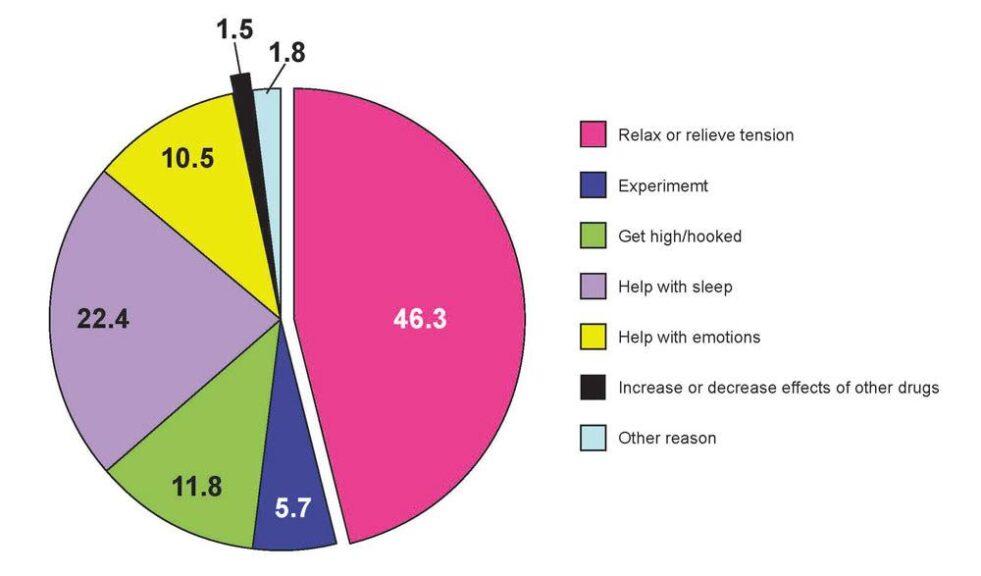
Natural remedies
Like in any other form of medically recognized anxiety disorder, thalassophobia can also be managed with some natural alternatives in addition to medical supervision. These might not directly treat your problem but definitely can help in supplementation of the medication.
From writing a journal to meditating twice or thrice a day, natural options are any day good for your mental health and stability. Being a part of a support group where you can be vocal about your problem and fear of seas might help you vent out your fear. Having a good and nutritious diet is always a recommended idea as it cleanses your system and improves concentration. When adapting to a natural way of living, you don’t need to stick to any diagnostic and statistical manual.
By being conscious of what you eat, how you conduct your life, and how bravely you fight your fears, you can really help yourself a lot more than you think.
Online therapy options
There are innumerable virtual reality exposure sessions and counselors available nowadays for anxiety disorders. For people who are hesitant to step out in crowded places, this can be a really good option.
Complications
There might be some complications when you try to cope up with your anxiety and fear, but never giving up is the key here! No matter how hard it gets, one should be resilient and reluctant to kneel down in front of medical challenges. This should be treated like a challenge, not an enemy. Slowly, you will regain your quality of life…
Panic Attacks
Panic attacks can be defined as sudden and quick bursts of extreme sensation of fear. Many people diagnosed with thalassophobia experience panic attacks. In order to identify a given attack, you can look for these characteristic features like increased heart rate, heart palpitations, stumbling, and shaking, accompanied by a sensation of losing control over oneself.
Loneliness and Social Isolation
In cases of phobia, people usually feel left out and desolate because of the non-recognition of the former. Social stigmas and the orthodox mocking of phobias only worsen the situation. It is important that we make the people suffering from these phobias feel socially inclusive. Only by being an empathetic society, we can help them reach their best potential in overcoming their respective fears.
Depression
Depression caused by fear can be one of the worst taints on mankind. Fear isn’t something that we can’t beat and overcome. But when an already scared person is mocked and fooled around with, he/she/they often land up on an island of depression. Helping them traverse the journey from thalassophobic to sea-loving is our duty as mankind.
Substance Misuse
Substance misuse can further aggravate the situation of thalassophobia and is related to poor treatment acceptance. It’s strictly recommended to stay away from any drug or substance.
Prevention
There are no specific prevention techniques for thalassophobia. Although less recognized, an ability to identify and manage one’s triggers and stressors can go a long way in maintaining a healthy life. Until the time that you haven’t really overcome your fear, avoidance of extremely large water bodies can be a good idea.
Only you, yourself can take the situation into your hands and prioritize your mental health and well-being and thus avoid many triggers. Whether you have a phobia or not, avoiding drugs and alcohol is always a good idea for your comprehensive health.
As these habits usually play with your body’s chemistry and anxiety associated with thalassophobia is also associated with your body’s chemistry, smartly choosing one can help you a lot. Lastly, if thalassophobia is triggered in a situation where medical help will take time to reach, deep breathing might work wonders.
Coping Tips
- Don’t hesitate to talk about your fear.
- Vent out in front of your therapist or anyone you trust.
- Don’t mind the public or orthodox stigmas associated with thalassophobia.
- If nothing is helping, try to reach out to the government helpline numbers of your country. There are devoted governmental associations and units that can help you without charging a penny for it.
- Join a support group. It has been commonly seen that you are warmly welcomed in groups that are alike, even if it’s a disorder that you are sharing. Sharing your heart out is an under-rated treatment that has helped millions of people worldwide.
Since this is above all the societal dimensions and opinions, the educated class should stand united in helping our fellow brethren overcome their specific phobias. Only when we provide sufficient mental health resources and aids, can we visualize substantial changes with respect to these common phobias in the public domain. Let’s move ahead and get you acquainted with the basics of thalassophobia.
Relaxation strategies
Thalassophobic individuals are recommended to try different types of relaxation techniques in order to find their best match. And once, you find the one, and then you should help yourself in all moments of despair by consciously practicing it. It could be deep breathing, jogging, practicing yoga, or even dancing.
Self-exposure
While we understand that fighting one’s fears isn’t an easy ordeal, we still recommend you to do it. You can start with simple yet effective methods of controlling your imaginations.
Only by overcoming the misuse or negative use of these wonderful human faculties called MEMORY and IMAGINATION, one can live happily. Try to not be intimidated by the thoughts of your brain. Try to control your imagination when it starts threatening you. These exercises, though less practiced, can work the magic for you!!!
Then try to get out to the sea once you overcome your imagination and feel the vivo exposure to the waves of the sea. This will take time but slowly you’ll fight your fear one day…
What Study Says …
Although there are no recorded estimates about the total number of people who are affected by thalassophobia across the world. But according to a study by Misimi, F., Kajtna, T., Misimi, S., & Kapus, J. (2020), aquaphobia affects a relatively larger population than thalassophobia per se. Approximately 140 to 210 million people across the globe have some or the other form of aquaphobia. On the basis of a 40-item questionnaire, these researchers tested some 2074 individuals (males plus females), out of which a good number of 2-3% reported some or the other fear of water. Try this questionnaire to find out how aquaphobic you are…

Take the Thalassophobia Biology Quiz!
References
- Weierich, M. R., & Treat, T. A. (2015). Mechanisms of visual threat detection in specific phobia. Cognition & emotion, 29(6), 992–1006. https://doi.org/10.1080/02699931.2014.960369
- Raymond JE, Shapiro KL, Arnell KM. Temporary suppression of visual processing in an RSVP task: An attentional blink? Experimental Psychology and Human Perception. 1992;18:849–860.
- Fox E, Russo R, Bowles R, Dutton K. Do threatening stimuli draw or hold visual attention in subclinical anxiety? Journal of Experimental Psychology: General. 2001;130(4):681–700. Retrieved from http://www.ncbi.nlm.nih.gov/pmc/articles/PMC1924776/
- Alan J Jamieson, Glenn Singleman, Thomas D Linley, Susan Casey, Fear and loathing of the deep ocean: why don’t people care about the deep sea?, ICES Journal of Marine Science, Volume 78, Issue 3, July 2021, Pages 797–809, https://doi.org/10.1093/icesjms/fsaa234
- Samra CK, Abdijadid S. Specific Phobia. [Updated 2022 May 8]. In: StatPearls [Internet]. Treasure Island (FL): StatPearls Publishing; 2022 Jan-. Available from: https://www.ncbi.nlm.nih.gov/books/NBK499923/
- Boeldt, D., McMahon, E., McFaul, M., & Greenleaf, W. (2019). Using Virtual Reality Exposure Therapy to Enhance Treatment of Anxiety Disorders: Identifying Areas of Clinical Adoption and Potential Obstacles. Frontiers in psychiatry, 10, 773. https://doi.org/10.3389/fpsyt.2019.00773
- Carleton, R. Nicholas (2016-06-01). “Fear of the unknown: One fear to rule them all?”. Journal of Anxiety Disorders. 41: 5–21. doi:10.1016/j.janxdis.2016.03.011
- Misimi, F., Kajtna, T., Misimi, S., & Kapus, J. (2020). Development and Validity of the Fear of Water Assessment Questionnaire. Frontiers in psychology, 11, 969. https://doi.org/10.3389/fpsyg.2020.00969
- NIDA. 2018, October 18. Research suggests benzodiazepine use is high while use disorder rates are low. Retrieved from https://nida.nih.gov/news-events/science-highlight/research-suggests-benzodiazepine-use-high-while-use-disorder-rates-are-low
©BiologyOnline.com. Content provided and moderated by Biology Online Editors.

